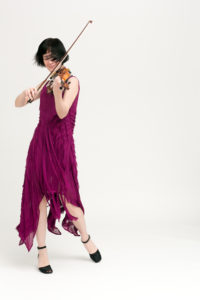Steve Lehman and Orchestre National de Jazz
Ex Machina
Pi Recordings
Saxophonist Steve Lehman not only has chops as a jazz musician, he is a trained composer with a background in electronics. Ex Machina is his most ambitious project to date, with electronics developed at the premiere new music center IRCAM in Paris. They respond live in performance to the spectral harmonies and polyrhythms made by the orchestra. While live electronics have been emanating from IRCAM for some time, Lehman’s electronics are neatly incorporated into both composed and improvised textures.
The first track “39” contains a solo by Lehman that strides the boundaries of inside and outside. Indeed much of the music here refuses to be easily categorized. While there are bespoke elements and post-tonal verticals, there are also soloists that swing and passagework that couldn’t have existed without big bands past.
The motoric plays a role as well. In “Los Angeles Imaginary,” one can hear the fracas of the freeways in polyrhythmic ostinatos from the rhythm section, while electronics and the horn section supply car horns and bleary trumpets a sliver of noir. “Chimera” is more mysterious, with pitched percussion mixing with gong-like electronics. Morse code percussion and repeated notes from the saxophones and trumpets succeed this, once more dealing with rhythmic layering. A florid vibes solo is the tune’s centerpiece.
“Jeux D’Anches” has repeated harmonic cells and furious drumming, over which a soaring trumpet solo and another vibes solo, after which the sections undertake the chordal repetitions, with a tuba alongside in off-kilter fashion. Before moving into a swelling jazz band section, “Les Treize Soleils” opens with a hat tip to Boulez, flute and electronics creating a modernist environment. Similarly, “Alchimie” juxtaposes modern classical gestures with a swinging backbeat.
Two long-form suites, “Speed-Freeze Parts 1 and 2” and “Le Seuil Parts 1 and 2” are Ex Machina’s culmination. The first opens with a slow repeated series of pitches in a small collection of instruments, Lehman’s saxophone among them, with vibrato prevalent. Quick-silver passages are juxtaposed with the slow material, with disjunct solos gradually accumulating, including an extended one for trombone. A Zappa-esque coda finishes the first part. The second part exudes funkiness from the band alongside another set of pitched percussion interjections. A baritone saxophone solo starts low and then uses pitch bends and squalls at its peak, joined by Lehman to trade licks. The tenor saxophonist then stretches out, playing exuberantly over off-kilter rhythms and chordal horn sections. Lehman’s solo concludes with caterwauling and nimble alternate scales. The various sections alternate quick repetitions, interrupted by the spacious pitched percussion interludes of the first part. Once again, low brass takes over the foreground, continuing to be juxtaposed with the percussion ostinato and repeated brass chords. The flutes return, descending in chromatic runs until subsumed by low brass and repeated vibraphone clangs.
“Le Seuil” begins with long electronic tones interrupted by splashy brass. Glissandos appear, only to have fortissimo brass provide a rejoinder. Clusters in the piano are repeated over sustained bass drones and haloed by electronics and microtonal horn lines. A loping trombone solo is swiftly interrupted by a slice of the full band. The music slides into a mystifying demeanor, one that mirrors the opening of “Speed-Freeze.” Single vibraphone notes and recessed wind chords are accompanied by extensive electronic punctuations. A trumpet call announces the end of the section. Part two begins with shimmering electronics, a thrumming bass line, a second ostinato in the piano, and an aggressive trombone solo. Chordal crescendos buoy the trombone’s closing gestures, and then angular counterpoint and a cascade of synth sounds take over, with the inexorable bass line continuing to pulsate, then sustain. Combined harmonies from electronics and the ensemble swirl into a brief denouement.
Lehman’s art combines the most sophisticated means, notable in terms of its harmonic construction, sophisticated rhythms, and employment of technology. In an excellent collaboration, Orchestre National de Jazz meets every challenge he poses. Ex Machina is one of my favorite releases of 2023.
-Christian Carey
